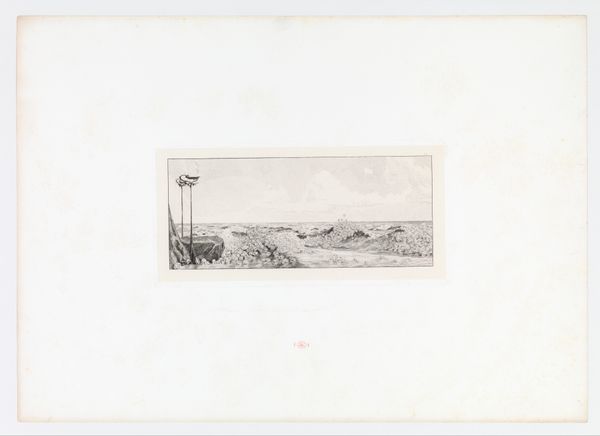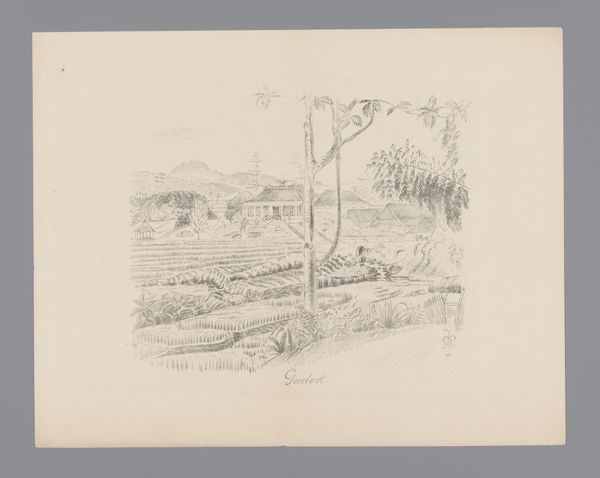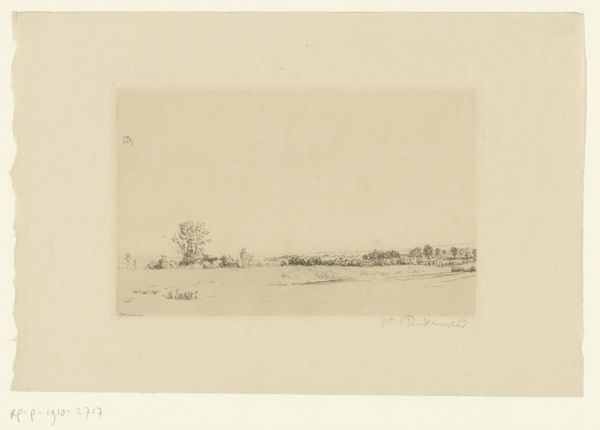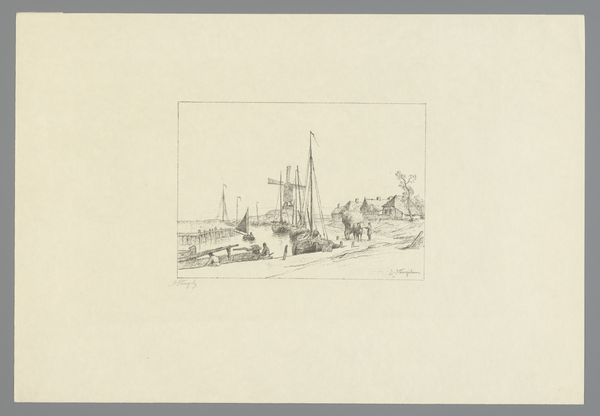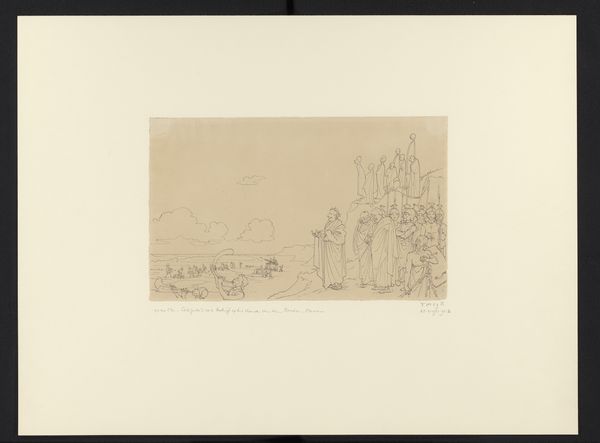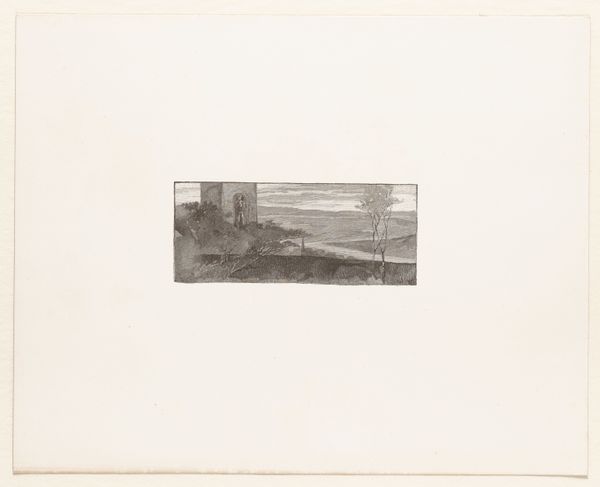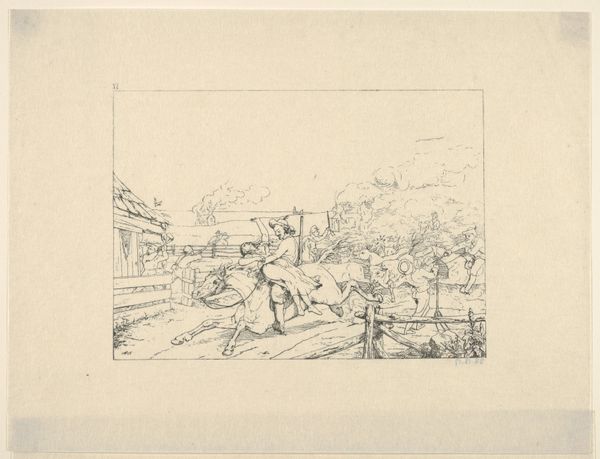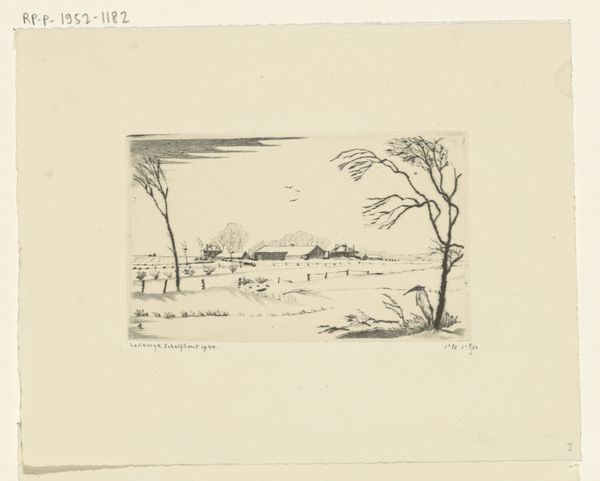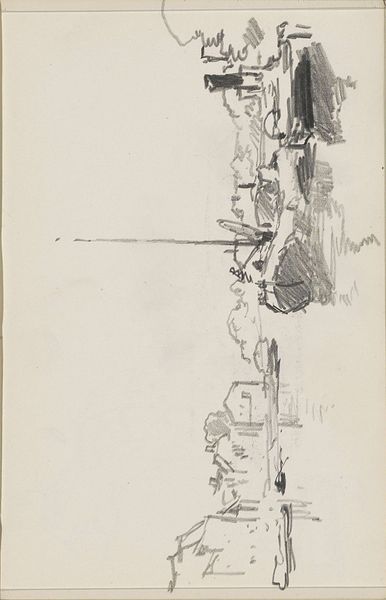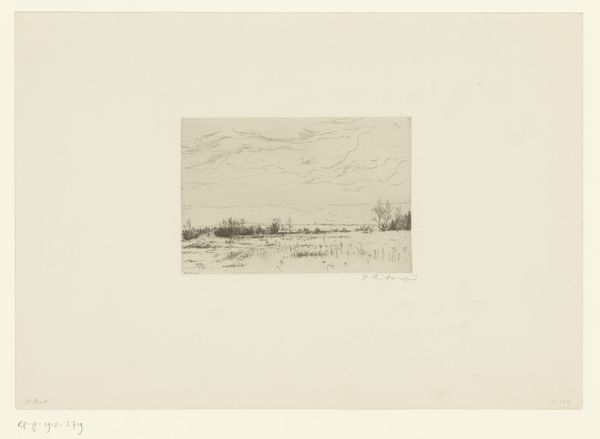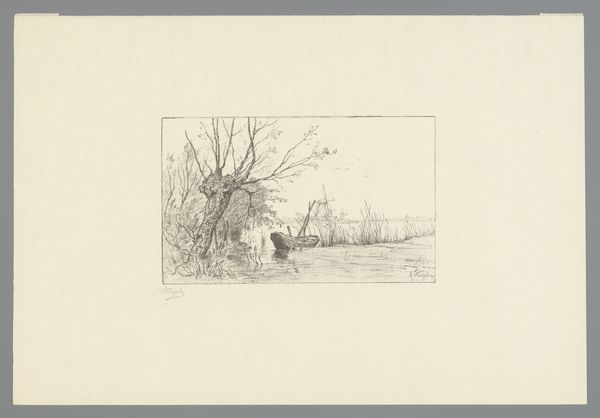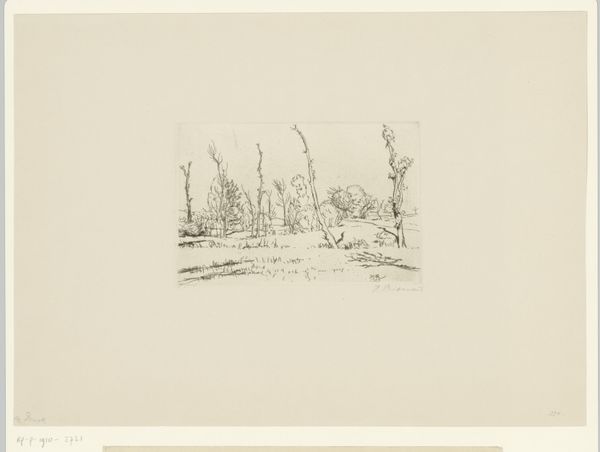
drawing, paper, ink
#
drawing
#
narrative-art
#
figuration
#
paper
#
ink
#
line
#
genre-painting
Dimensions: height 156 mm, width 292 mm
Copyright: Rijks Museum: Open Domain
Curator: I'm immediately struck by the sheer line work in this drawing. It’s incredibly spare yet conveys so much. Editor: Indeed. We’re looking at a drawing rendered in ink on paper created between 1893 and 1895. It's titled "1384 / Willem Beukelszoon van Biervliet vindt het haringkaken uit," attributed to Johan Huizinga. That translates to "Willem Beukelszoon van Biervliet invents herring gutting." Curator: The spatial relationships are interesting. Note the positioning of figures in relation to each other and how that open space between the foreground scene and the distant figures emphasizes their relationship to the wider historical narrative. It really creates this juxtaposition between action and legacy. Editor: Exactly! Huizinga is portraying a key moment in Dutch history—the supposed invention of herring gutting, a pivotal technique for the nation’s fishing industry and economic strength. And yet, the supposed scene looks humble and unimpressive at a table outdoors, the impact is magnified as we pan across the waters to the dignitaries seemingly acknowledging this achievement. Curator: It’s that contrast between the close and precise rendering of the protagonist in the foreground versus the simplification of the dignitaries standing at a distance that contributes significantly to its message. Semiotically, you could argue, one is the hand and other is the machine or effect this process caused to Dutch life. Editor: Precisely. Furthermore, you cannot ignore that the creation and promotion of historical figures became quite significant when national identities were being built and refined. What narratives become dominant speaks to the priorities of the dominant social and political ideologies of that period. Curator: Considering that this drawing is in ink, it suggests that Johan Huizinga employed calculated execution rather than fluid application to build it into its historical context, but it appears almost nonchalant, if that makes sense. Editor: Absolutely, as you reflect on its structural aspects you reveal so much meaning about not only Huizinga, the history itself, and the nation state it contributed to at the turn of the century. Thanks for helping unravel it. Curator: And thank you for providing such insightful historical context. A truly illuminating piece, brought to life!
Comments
No comments
Be the first to comment and join the conversation on the ultimate creative platform.

